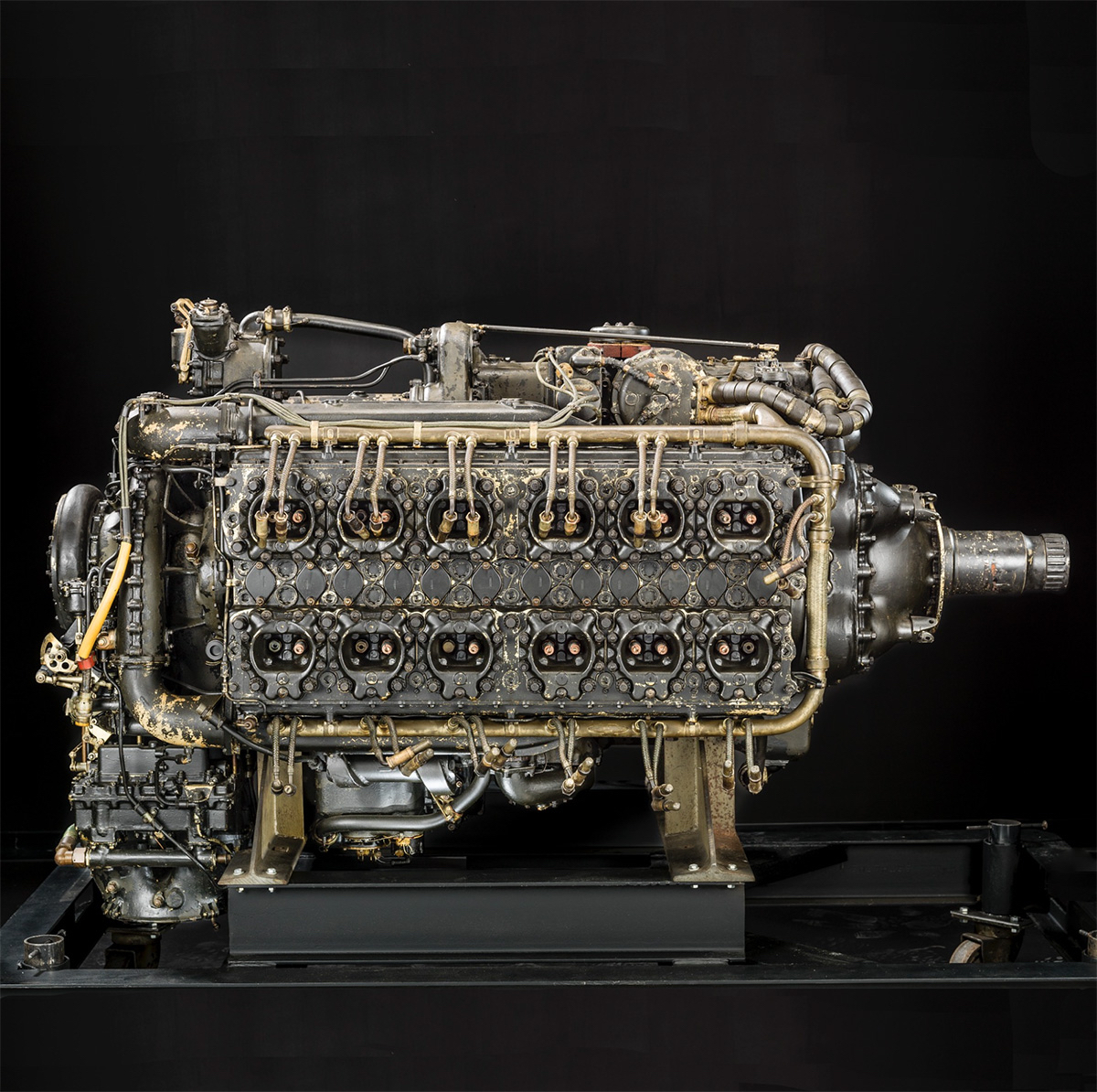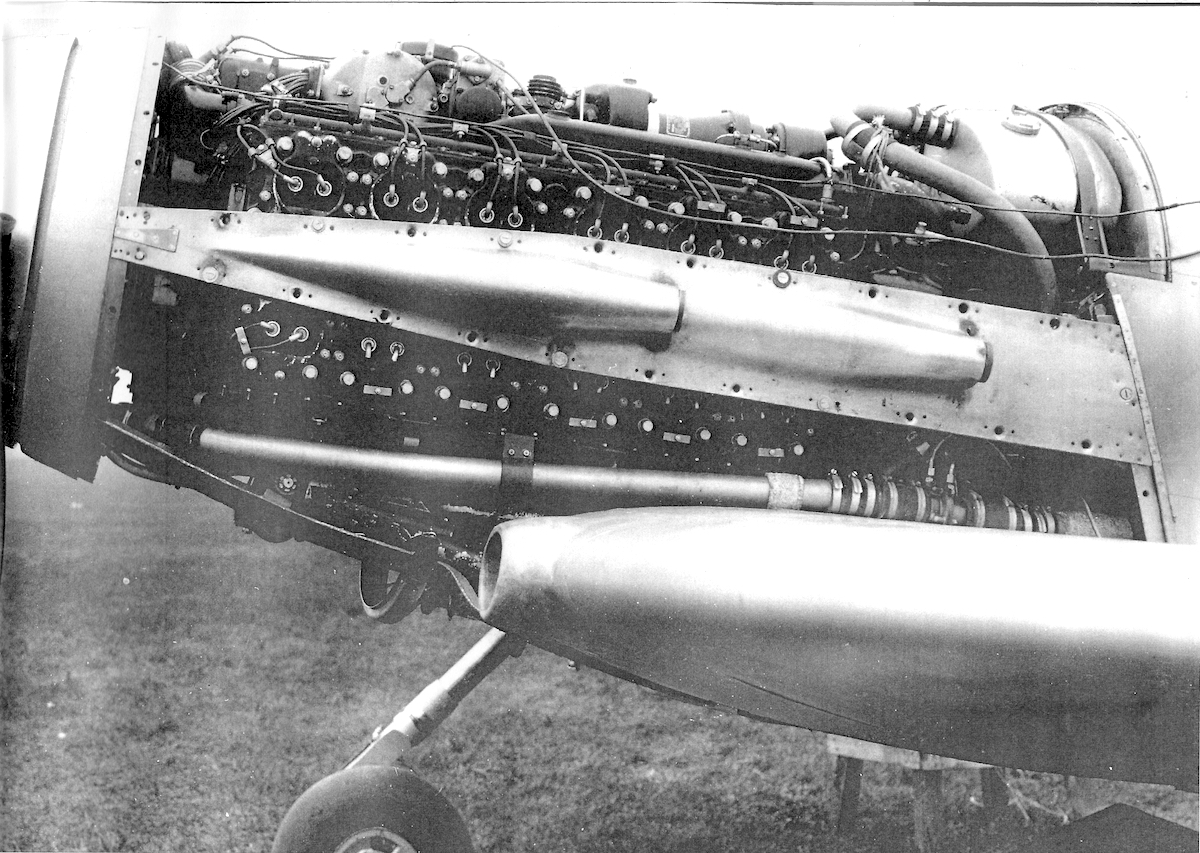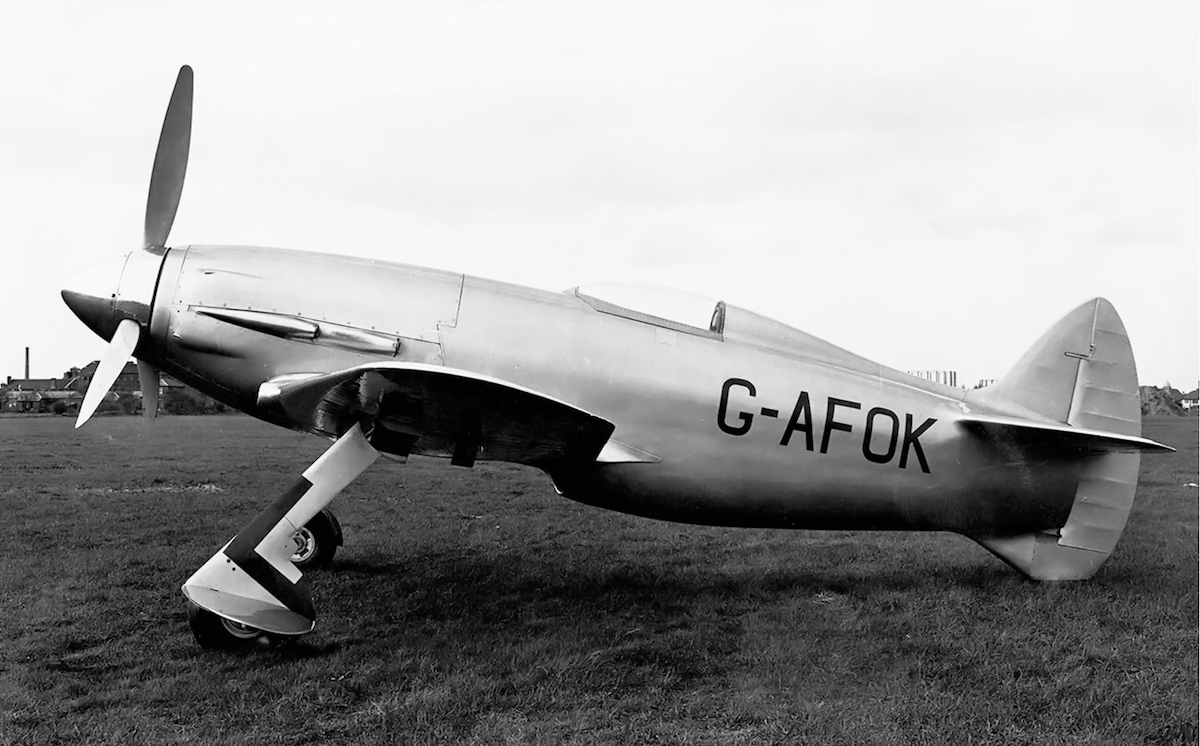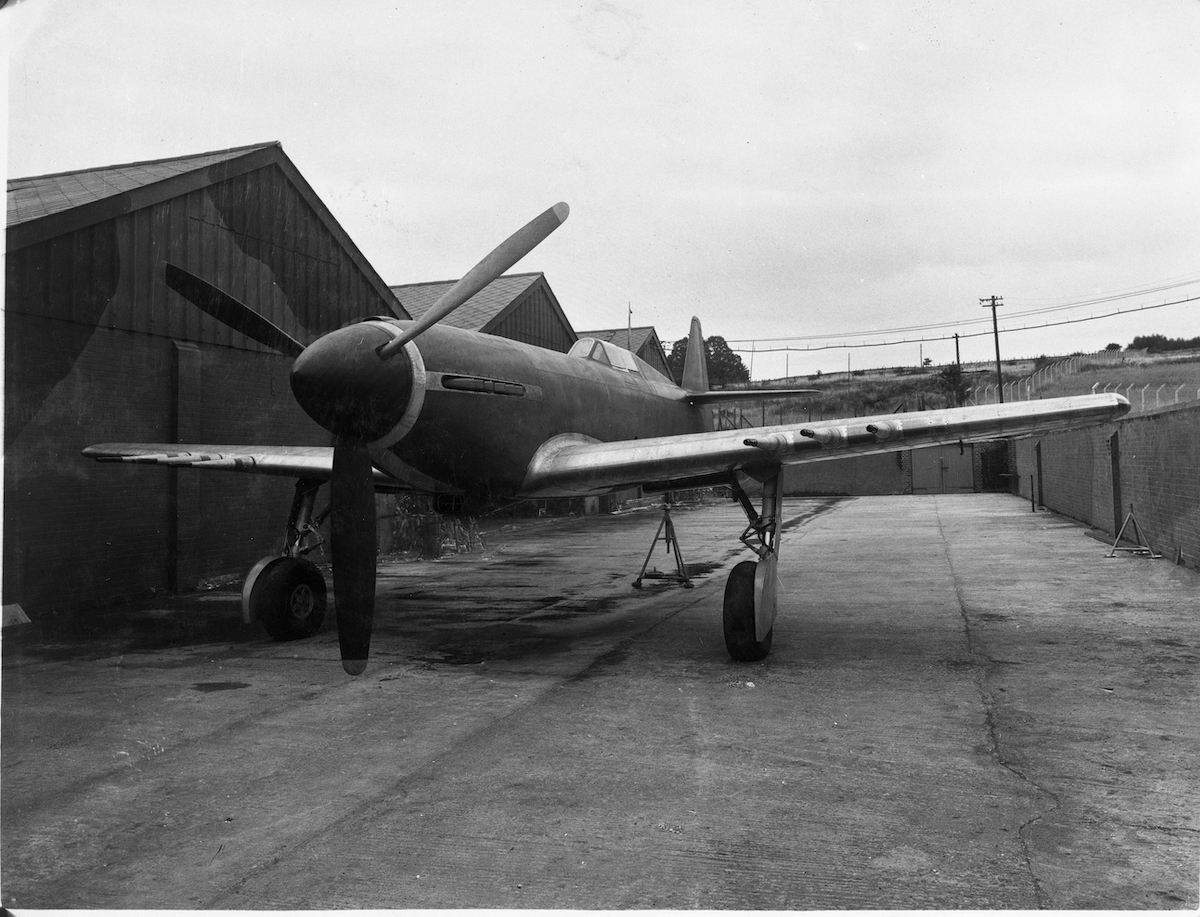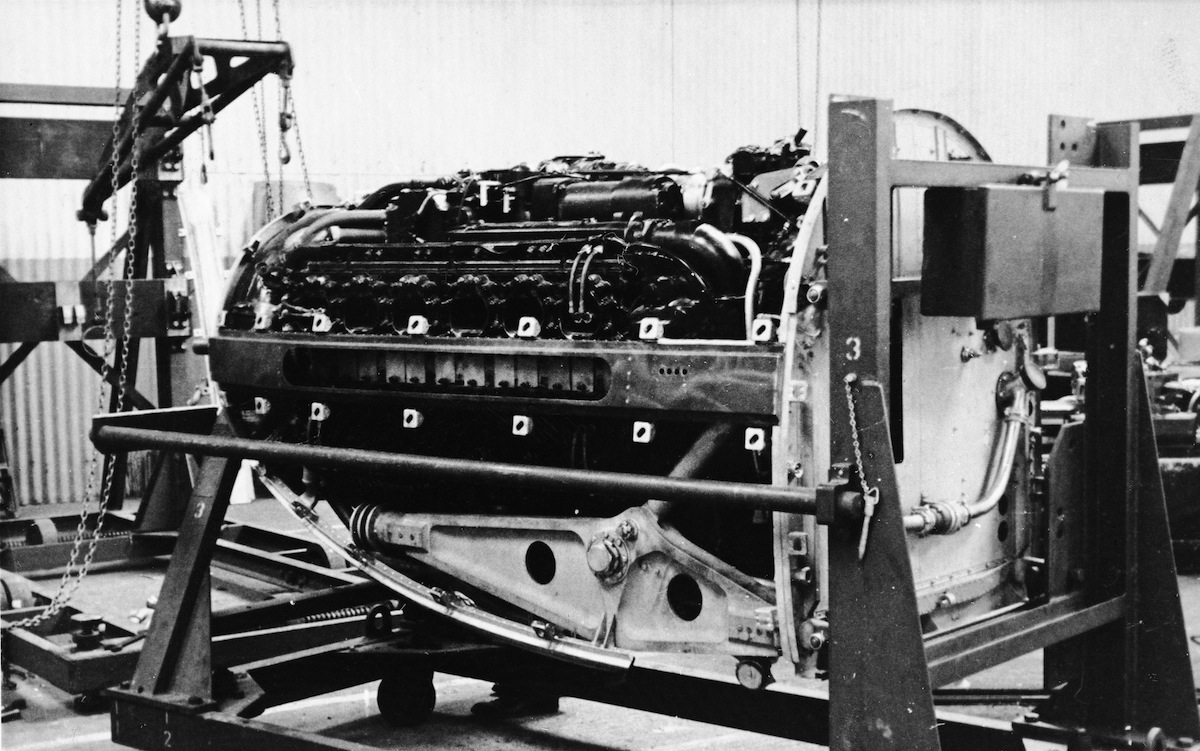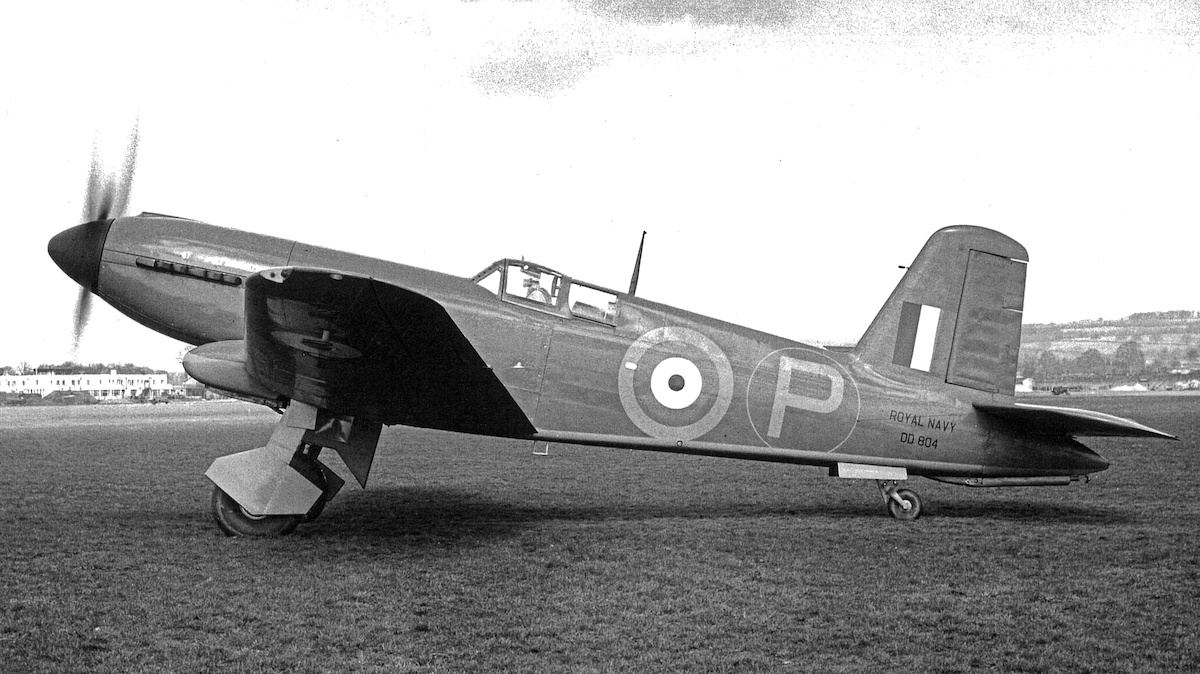Sabre Engines with Suction-type carburettors
Within two years the ‘prototype’ petrol Sabre engine was completed and successfully run on 23rd November 1937. It completed its initial acceptance acceptance tests by 17th January 1938. Two months later the power delivered had already risen from the 1,350 BHP acceptance test rating to 2,050 BHP. Initial testing was concerned with the compilation of engine data after which a period of development was undertaken to achieve mechanical reliability. Gradually the Series I (E114) engine was evolved and type tested in June 1940 at a maximum power rating of 2,060 BHP.
In early 1939 tests were undertaken with a special grounded boosted version of the Sabre to be used in a Heston aircraft for an attack on the world’s speed record. An air blast was applied to the air intake on the test bed to simulate a forward speed of 400 mph. Under these conditions a maximum power of 2,650 BHP was achieved at 4,000 CRPM and 9.2 psi boost pressure which represented a 5 minute limit at full throttle. Unfortunately the Heston Racer, through no fault of its own, crashed during its initial flight trials and, owing to the war, further tests were abandoned.
The Sabre Series I engine was fitted with a supercharger with an 11.1⁄8” diameter impeller and a clutch that was capable of gear changing at maximum cruising speed only (designated Mark I clutch). After some 60 Series I engines had been produced the design was changed to include :
- A supercharger with a 12” diameter impeller
- A supercharger clutch capable of gear changing at maximum climbing speed (Mark II)
- Larger carburettor chokes.
This Sabre engine design was designated as Series II; both the Sabre I and II engines were rated at the same take-off and combat boost pressure but because of the larger supercharger impeller the maximum power altitude of the Series II was raised by 1,500 feet in ‘M’ gear and 2,000 feet in ‘S’ gear. The Sabre II underwent flight tests installed in a Folland at the Napier Flight Development Establishment at what is now Luton Airport. One example was also fitted in the Martin-Baker MB3 aircraft.
During 1941 and 1942 Service experience in the Typhoon had faults which had not been apparent during the test bed development of the engine. A further modified version of the engine was produced in May 1943 which increased the combat boost to +9 lb/sq.in. and raised the maximum power output from 2,090 to 2,220 BHP. This engine was designated Series IIA and included further improvements such as a strengthened starter gear train, fully nitrided sleeves, and strengthened sleeve drives.
The Series IIA engine was eventually superseded in 1944 by the Series IIB (E107A) engine. The advent of the V1 flying bomb in June 1944 had called for an improved performance at low altitudes and this was achieved by increasing the combat rating boost to +11 lb/sq.in. This raised the maximum power output to 2,420 BHP, and enabled the Tempest fighter to catch and destroy large numbers of flying bombs.
The design was constantly being improved upon, until finally in 1945 the Series IIC (E107B) was evolved. The production of this engine, with an improved type of carburettor with a weaker mixture setting, marked the peak in the design and performance of Sabre engines fitted with suction type carburettors. The two-speed supercharger drive was altered to give a closer ratio; this being done by raising the ratio of the ‘M’ gear whilst leaving the ‘S’ gear unchanged.
A modified version of the Series II engine but incorporating balanced crankshafts and strengthened sleeve drives was evolved in 1941 to meet the special requirements of the Fleet Air Arm Fighter. This engine, designated the Series III, had a maximum power rating of 2,305 BHP, and a take-off power of 2,250 BHP at 4,000 CRPM, the high take-off RPM being in the interests of propeller thrust. About 30 of these engines were built between 1942 and 1943 and were fitted (as a complete power unit) to the Blackburn B37 Firebrand aircraft. This aircraft never became fully operational mainly because the Sabre was being prioritised for the Hawker Typhoon, but was used extensively for training purposes.

